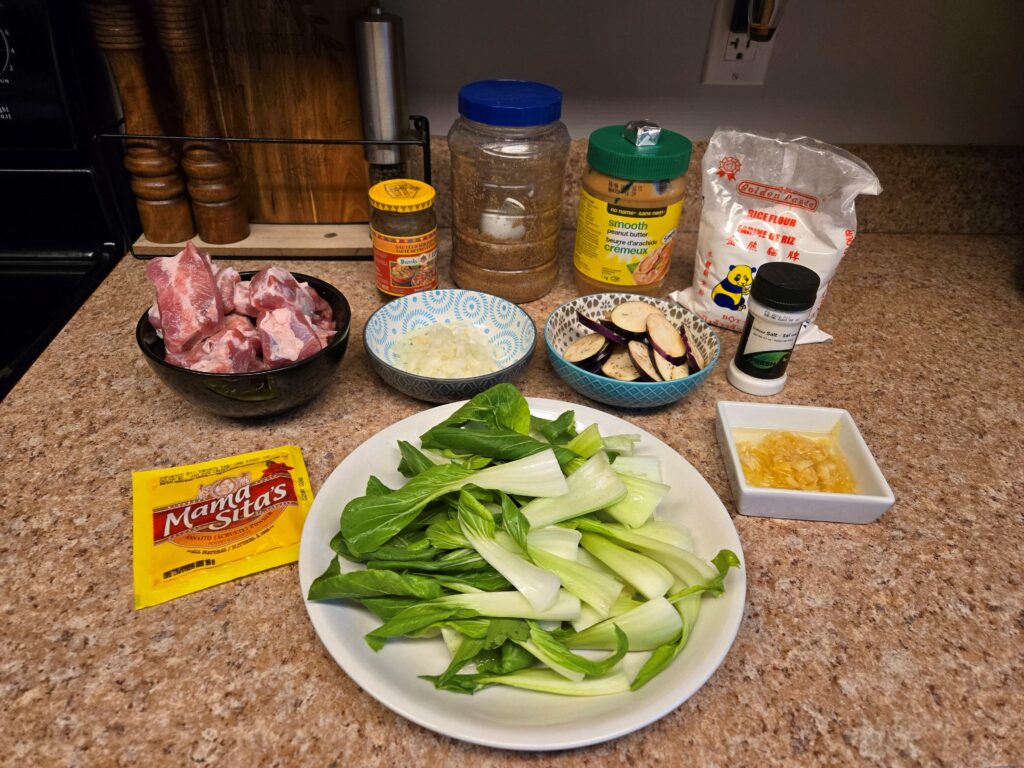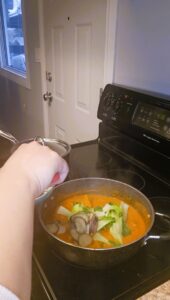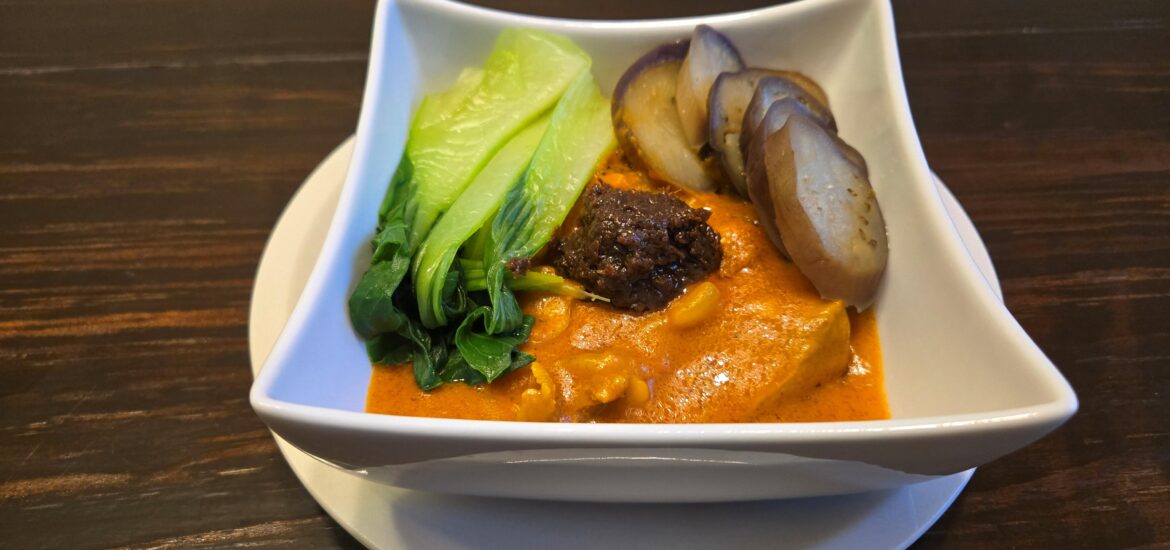Brief history:
In my seventh learning project, I decided to make kare-kare. This dish is considered a showstopper—one that grabs attention—because it’s not commonly served and is usually reserved for special occasions like weddings or milestone birthdays. The ingredients can be quite expensive, which adds to its rarity and prestige.
According to Esquire, kare-kare is believed to be a Kapampangan dish. The name is thought to be a humble version of “kari,” which refers to curry in other countries. The Kapampangan version is said to resemble curries from places like Sri Lanka and Thailand. Over time, kare-kare evolved, with some versions incorporating curry powder and even sugar.
The kare-kare I know is savory and rich, with a strong peanut butter flavor and a subtle taste of ground rice. It’s traditionally served with shrimp paste on the side, which adds a salty, umami kick that balances the dish beautifully.
Ingredients:
– 1 lbs of pork/ribs
– 1 bundle of pechay or bok choy
– 1 piece of eggplant
– 2 tablespoons of peanut butter
– 3 cups of water
– 1 small pack of annatto powder
– 2 tablespoons of rice flour
– 1 tbsp minced garlic
– half of chopped onion
– 2 tablespoons of fish sauce
– shrimp paste to be used on the side

The original ingredients for kare-kare are oxtail and tripe. However, since those were expensive, I had to use what we had in the fridge. Kare-kare can actually be made with different kinds of meat—even shrimp—so I decided that pork would be a good alternative.
The dish traditionally includes sliced banana flower bud and string beans cut into two-inch pieces, but I couldn’t find those here, so I wasn’t able to include them.
Procedure:














Online learning:
I browsed Instagram in search of kare-kare recipes and came across the buzzfeedtasty page. They featured a short 56-second video on how to cook kare-kare. I learned the dish through that clip, but it was quite challenging—the transitions were fast, and the ingredients weren’t clearly listed. They only flashed briefly, so I had to write them down to avoid getting lost.
Thankfully, my first attempt was a success. I felt relieved and happy to taste something familiar—it reminded me of the kare-kare I’ve known.
Reflection:
After I cooked kare-kare, I started thinking about how peanut butter seems to find its way into many Filipino dishes. I’ve made kaldereta before, and it also features peanut butter. It fascinates me how this ingredient can deepen and enrich the flavor of a dish.
Peanut butter and shrimp paste balance each other out. Despite being opposites in taste—one creamy and slightly sweet, the other salty and pungent—they complement each other beautifully.
This dish brought me back to my younger days, when kare-kare was reserved for special occasions. I can’t recall my mom making it until I was already in university, which makes this experience feel even more special.
Question of the day:
If you were to cook Kare-Kare, which ingredient would you add or remove—and why?
Disclaimer: Used Co-pilot as a grammar checker! 🙂

